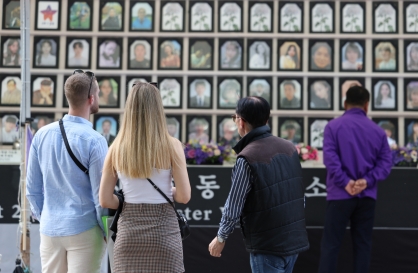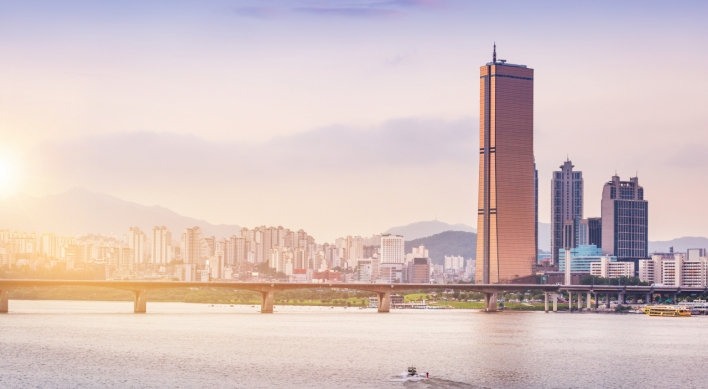
The Upo Wetlands are currently on the Tentative List for UNESCO World Heritage Sites. The enlistment acknowledges Upo’s contribution to the local biodiversity as being a site of natural conservation. It is now one of the most visited spots for ecotourism. The listing as a World Heritage Site is therefore supported by many Koreans.
The wetlands have played an important role, both naturally and culturally. Alongside hosting local biodiversity, they connect people with nature.
Upo is a source of natural wonder. Children and parents can find ways to relate with the natural environment around them and connect the techno-centered world with nature. The wetlands are a source for research into natural patterns of biological diversity and the changes it is experiencing amid global climate change. Records of Upo’s climates and environment can be used to evaluate the current situation and future changes in how the Korean Peninsula will respond to global climate change.
The aesthetic value of Upo is also appreciated. Upo is composed of four connected wetlands, which makes the place a unique geographical and geophysical location. This has resulted in a pattern of visual changes throughout the year, which is distinct enough to make it a symbolic wetland globally.
In the springtime Upo is bedecked with Chinese vetch blooms and the land is carpeted in a patchwork of purple and green. Slowly the seasonal change bring about a change in color, with summer exploding in yellow. Water lilies create sheets of yellow across the wetlands, mirroring the brilliant sun that hangs overhead. In the autumn, eulalias pirouette in the wind. As winter arrives, birds visit Upo as part of their annual migration. The wetlands become a noisy place with teals performing their ballet in the skies.
The abovementioned factors are attractive enough for Upo to be designated a World Heritage Site. Its value has been acknowledged long before in Korea. In 1998 the wetlands were designated a Natural Conservation Area, followed by designation as a Ramsar Site in 1999. In 2003, Upo was included in a Korean Long Term Ecological Research Program. Such protection schemes provide the basis for the evaluation, protection and monitoring of Upo’s natural status.
However, there is always the fear of manmade damage. The area is continuously exposed to a high level of stress leading to change or loss of the natural habitat. A protection scheme is needed to preserve its ecological ― and cultural ― value. And the best way, I believe, is the enlistment of it as a UNESCO World Heritage Site, which is designed to conserve and protect natural and cultural heritage.
Having Upo designated under each of these programs would bring cohesiveness to the protection of all aspects of Upo, and furthermore secure biodiversity in the area. It would also make sure people can appreciate the natural, historical and cultural value of the wetland for a long time.
Without securing the protection of the cultural attributes we may fail to preserve the ecosystem. While the current designations provide a decent level of protection for the area, we need organized protection. And the UNESCO World Heritage Site designation would be a good opportunity for the preservation of the ecological, geological, historical and cultural value of one of the best wetlands in the world.
By Yuno Do
The author is a researcher at the Department of Biological Sciences, Pusan National University. ― Ed.
The wetlands have played an important role, both naturally and culturally. Alongside hosting local biodiversity, they connect people with nature.
Upo is a source of natural wonder. Children and parents can find ways to relate with the natural environment around them and connect the techno-centered world with nature. The wetlands are a source for research into natural patterns of biological diversity and the changes it is experiencing amid global climate change. Records of Upo’s climates and environment can be used to evaluate the current situation and future changes in how the Korean Peninsula will respond to global climate change.
The aesthetic value of Upo is also appreciated. Upo is composed of four connected wetlands, which makes the place a unique geographical and geophysical location. This has resulted in a pattern of visual changes throughout the year, which is distinct enough to make it a symbolic wetland globally.
In the springtime Upo is bedecked with Chinese vetch blooms and the land is carpeted in a patchwork of purple and green. Slowly the seasonal change bring about a change in color, with summer exploding in yellow. Water lilies create sheets of yellow across the wetlands, mirroring the brilliant sun that hangs overhead. In the autumn, eulalias pirouette in the wind. As winter arrives, birds visit Upo as part of their annual migration. The wetlands become a noisy place with teals performing their ballet in the skies.
The abovementioned factors are attractive enough for Upo to be designated a World Heritage Site. Its value has been acknowledged long before in Korea. In 1998 the wetlands were designated a Natural Conservation Area, followed by designation as a Ramsar Site in 1999. In 2003, Upo was included in a Korean Long Term Ecological Research Program. Such protection schemes provide the basis for the evaluation, protection and monitoring of Upo’s natural status.
However, there is always the fear of manmade damage. The area is continuously exposed to a high level of stress leading to change or loss of the natural habitat. A protection scheme is needed to preserve its ecological ― and cultural ― value. And the best way, I believe, is the enlistment of it as a UNESCO World Heritage Site, which is designed to conserve and protect natural and cultural heritage.
Having Upo designated under each of these programs would bring cohesiveness to the protection of all aspects of Upo, and furthermore secure biodiversity in the area. It would also make sure people can appreciate the natural, historical and cultural value of the wetland for a long time.
Without securing the protection of the cultural attributes we may fail to preserve the ecosystem. While the current designations provide a decent level of protection for the area, we need organized protection. And the UNESCO World Heritage Site designation would be a good opportunity for the preservation of the ecological, geological, historical and cultural value of one of the best wetlands in the world.
By Yuno Do
The author is a researcher at the Department of Biological Sciences, Pusan National University. ― Ed.
-
Articles by Korea Herald





![[Music in drama] Rekindle a love that slipped through your fingers](http://res.heraldm.com/phpwas/restmb_idxmake.php?idx=644&simg=/content/image/2024/05/01/20240501050484_0.jpg&u=20240501151646)


![[New faces of Assembly] Architect behind ‘audacious initiative’ believes in denuclearized North Korea](http://res.heraldm.com/phpwas/restmb_idxmake.php?idx=644&simg=/content/image/2024/05/01/20240501050627_0.jpg&u=20240502093000)










